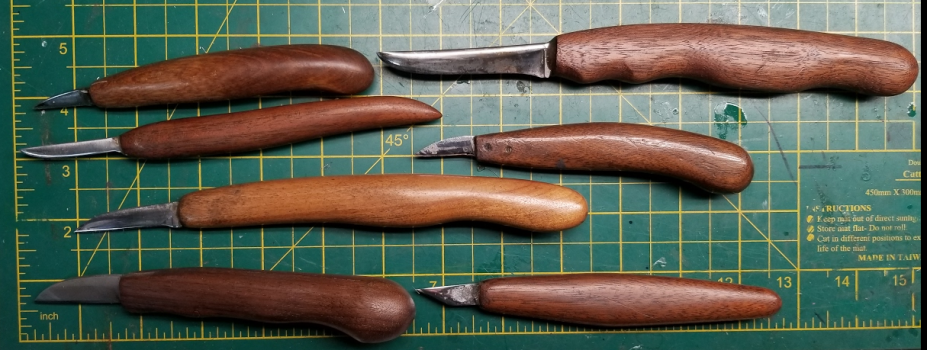Many decades ago I carved wood, lots of wood. As others have said, the "tool" for carving can take a number of forms from a simple pocket knife for whittling to very complex shaped gouges. Back in the day - before I heat treated anything - I simply bought broken razor blades and ground them to fit the shape I needed, very crude and very effective. I still use those knives today.
Today, my go to steel for knife blades is thin O1 tool steel, say, less than .100".
In my opinion, steel alloy is important. But, equally important is blade shape and handle shape. The cutting edge profile must fit the need for material removal. The handle needs to fit the hand - AND, provide comfortable leverage around a fulcrum point just behind the blade. Carving relies a lot on rotating the blade around the thumb positioned just behind what would be the bolster area, giving significant controlled force at the cutting edge.
Here are few examples of the many carving tools I have, these were mostly made of razor blades. They are very crude, but very effective. Note the different blade shapes, all are used for a specific purpose.
View attachment 77879


